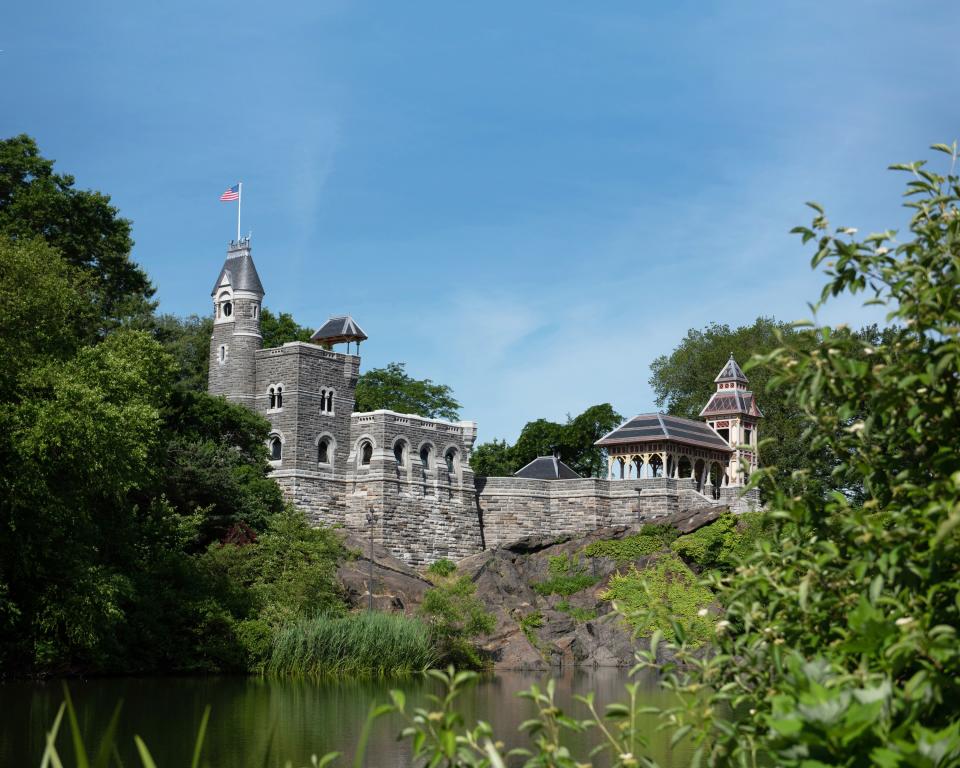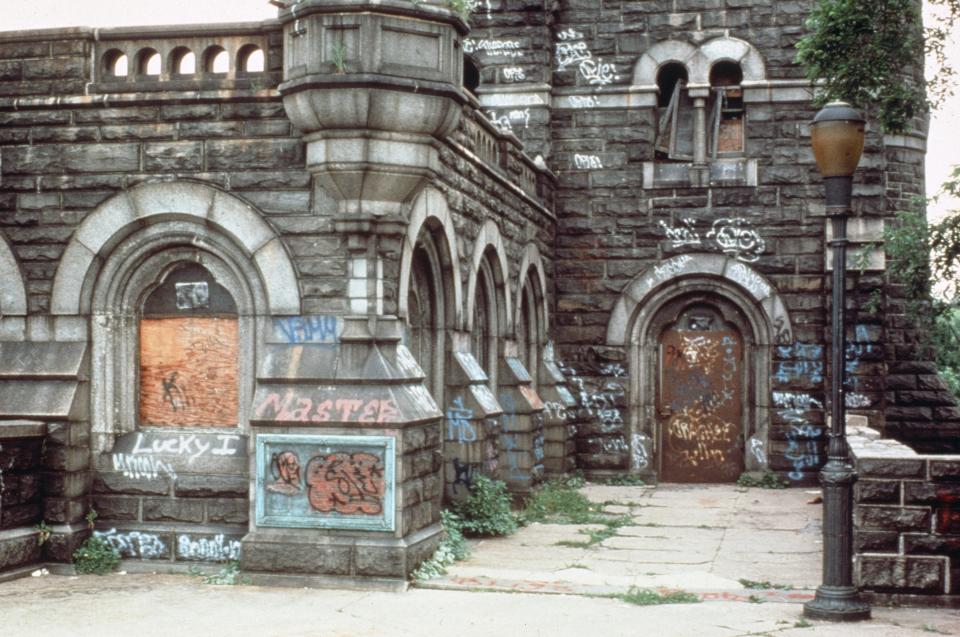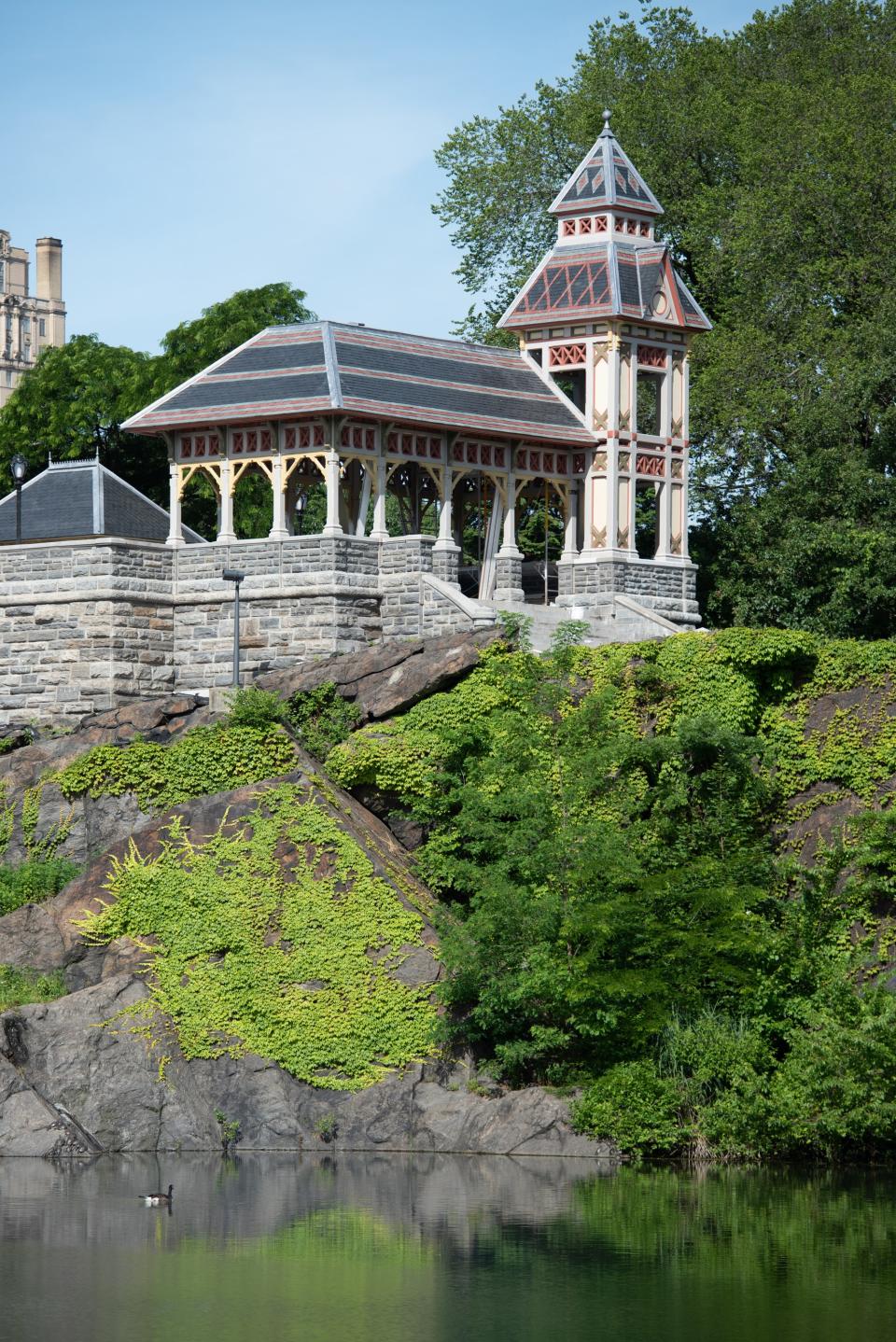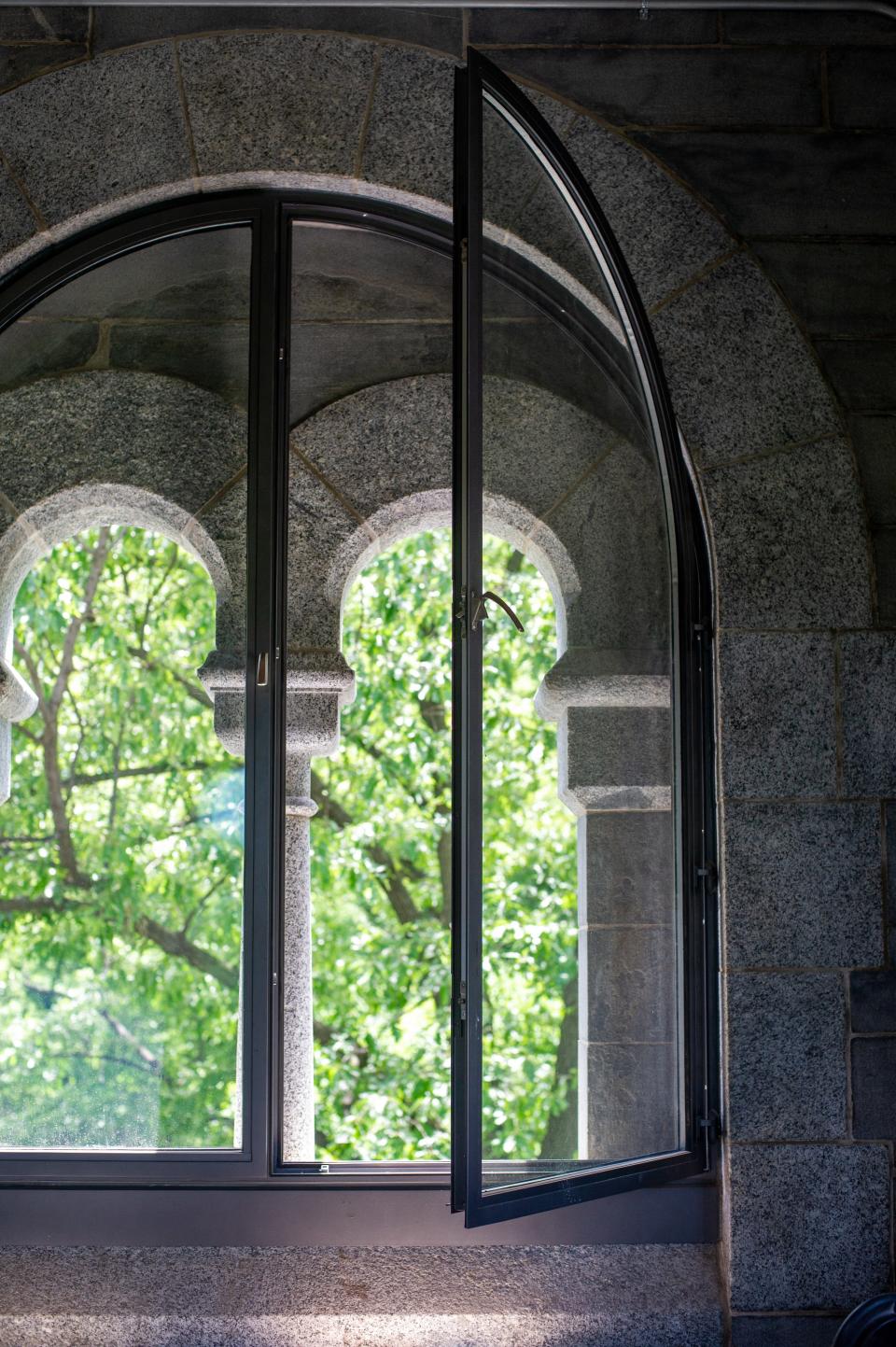Central Park’s Iconic Belvedere Castle Is Restored to Its Original Splendor
In many ways, the story of the Belvedere is the story of Central Park itself. Included in legendary landscape architects Frederick Law Olmsted and Calvert Vaux’s original 1858 vision for the park, it was completed in 1872 and offered visitors a truly “beautiful view” (as its name means in Italian) of the park from a perch atop Vista Rock.
At its best, the Belvedere, which is located in the middle of the park just off the 79th Street Transverse, captured what Central Park Conservancy president and CEO Elizabeth W. Smith described as “a feeling of respite from the urban density that the park represented for everyone who came here.” But the Belvedere’s eventual descent into a graffiti-covered eyesore by the 1970s was symptomatic of New York City’s broader urban decay. Now, thanks to an extensive Conservancy-led renovation project, the Belvedere is poised to further entrench its status as Central Park’s signature architectural attraction once it reopens to the public on June 28.

The 15-month, $12 million effort is both a restoration of the castle-like structure to its original splendor and a modernization effort aimed at preserving and enhancing the Belvedere for generations to come. “What’s old is new again both in terms of modern infrastructure and the re-creation of details that have been lost for the better part of a century,” says Christopher Nolan, the Central Park Conservancy’s chief landscape architect, of his team’s efforts. “The structure has really become both a historic one and a very contemporary one at the same time.”

History was indeed a useful guide for the project. The team constructed a faithful recreation of a decorative wooden tower, reclaiming a spot at the northwest corner of the pavilion that it occupied from 1870 to 1872. The Conservancy also consulted historic drawings of the terrace to reintroduce checkerboard-style bluestone pavers. Windows, first installed when the U.S. Weather Bureau took over the space in 1919 and later updated by the Conservancy in both 1983 and 1995, were reimagined as well: Clear glass panes will attempt to more faithfully recapture the unobtrusive open-air views that its architects originally intended.


In addition to restoration and repairs, the infrastructural elements of the project draw from more contemporary design inspirations, with an eye toward improving strength and sustainability. New waterproofing and drainage systems were installed in order to mitigate the damage to the solid masonry structure caused by leaks; a minimalist, movable lighting system to tastefully light the “interior” spaces will also make its debut. In order to improve the interior climate control of the stone structure, a closed-loop geothermal ventilation system was introduced by drilling 400 feet down into the Vista Rock upon which it sits. Depending on the season, the earth’s consistent 50-to-60-degree temperature at that depth can warm or cool water as it’s pumped through pipes and into the Belvedere’s air system, allowing for zero-emission climate control.
With so many impressive elements to display, it’s no surprise that the Central Park Conservancy wants to show off the new and improved Belvedere by illuminating the space from below at night. “It will be a magnificent nighttime venue for New Yorkers,” says Smith. “You can light up midtown as much as you want, and nothing’s going to compare to looking at the Belvedere at night.” Given how well the Belvedere captures Central Park’s storied history while also pointing a way toward the future, it’s hard to argue with that.
Originally Appeared on Architectural Digest

